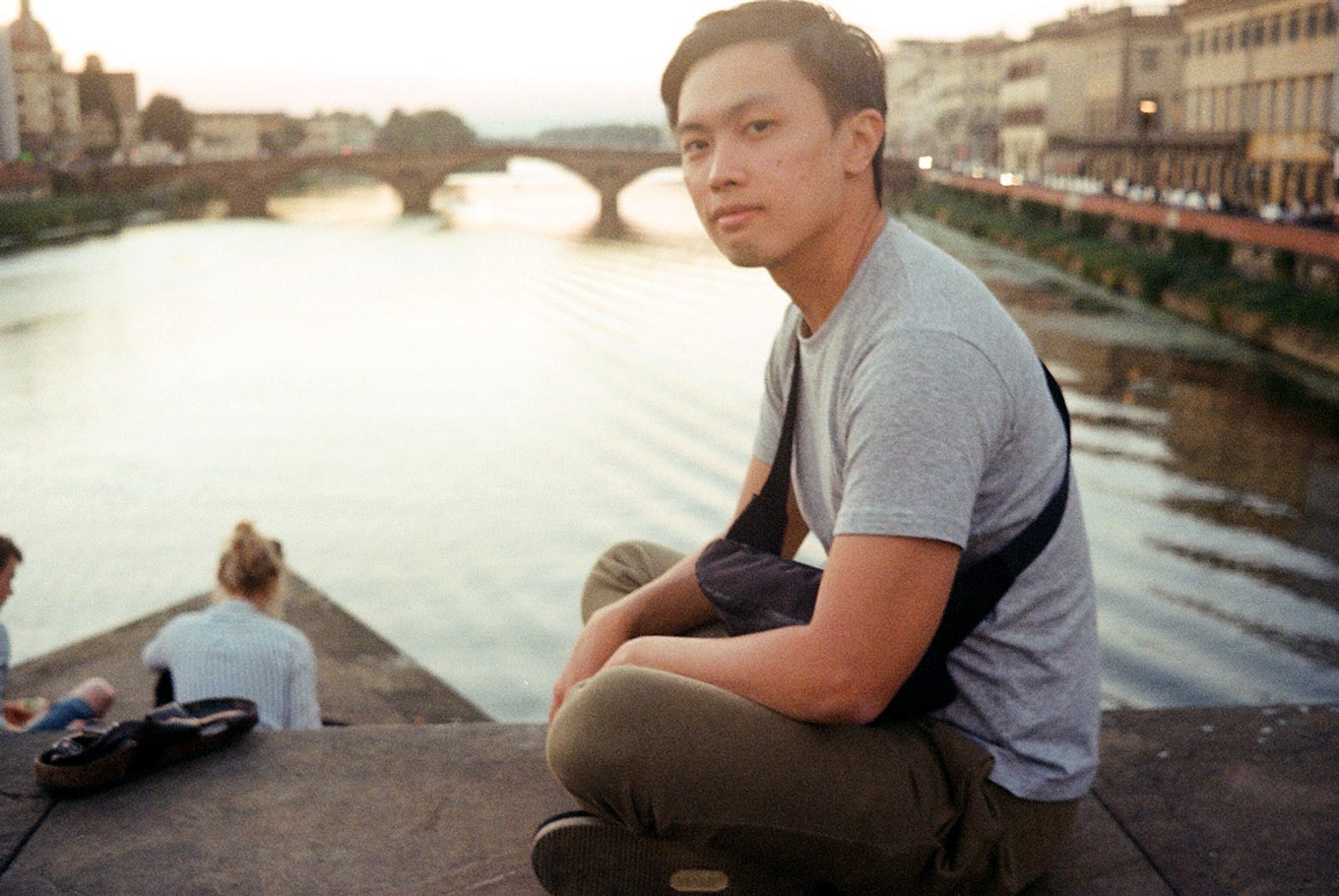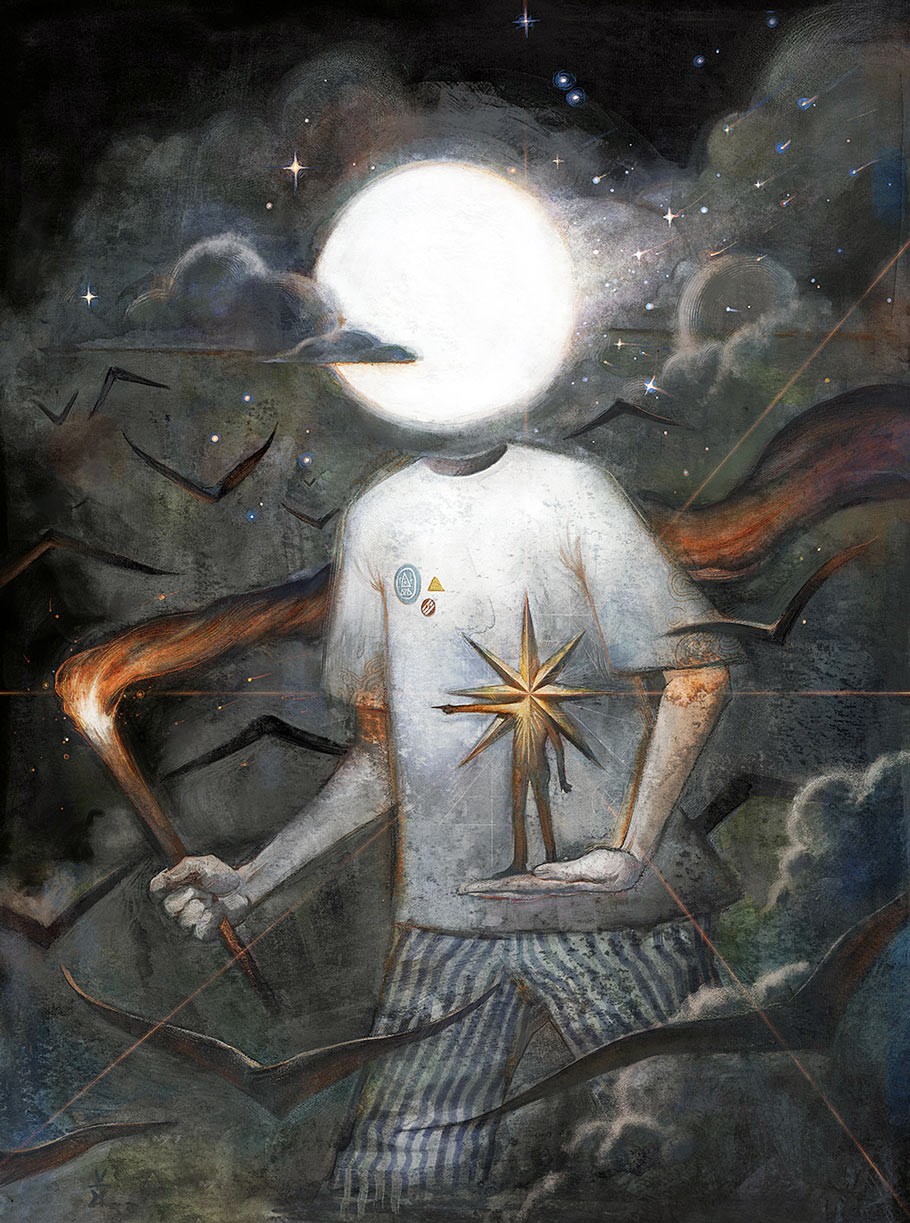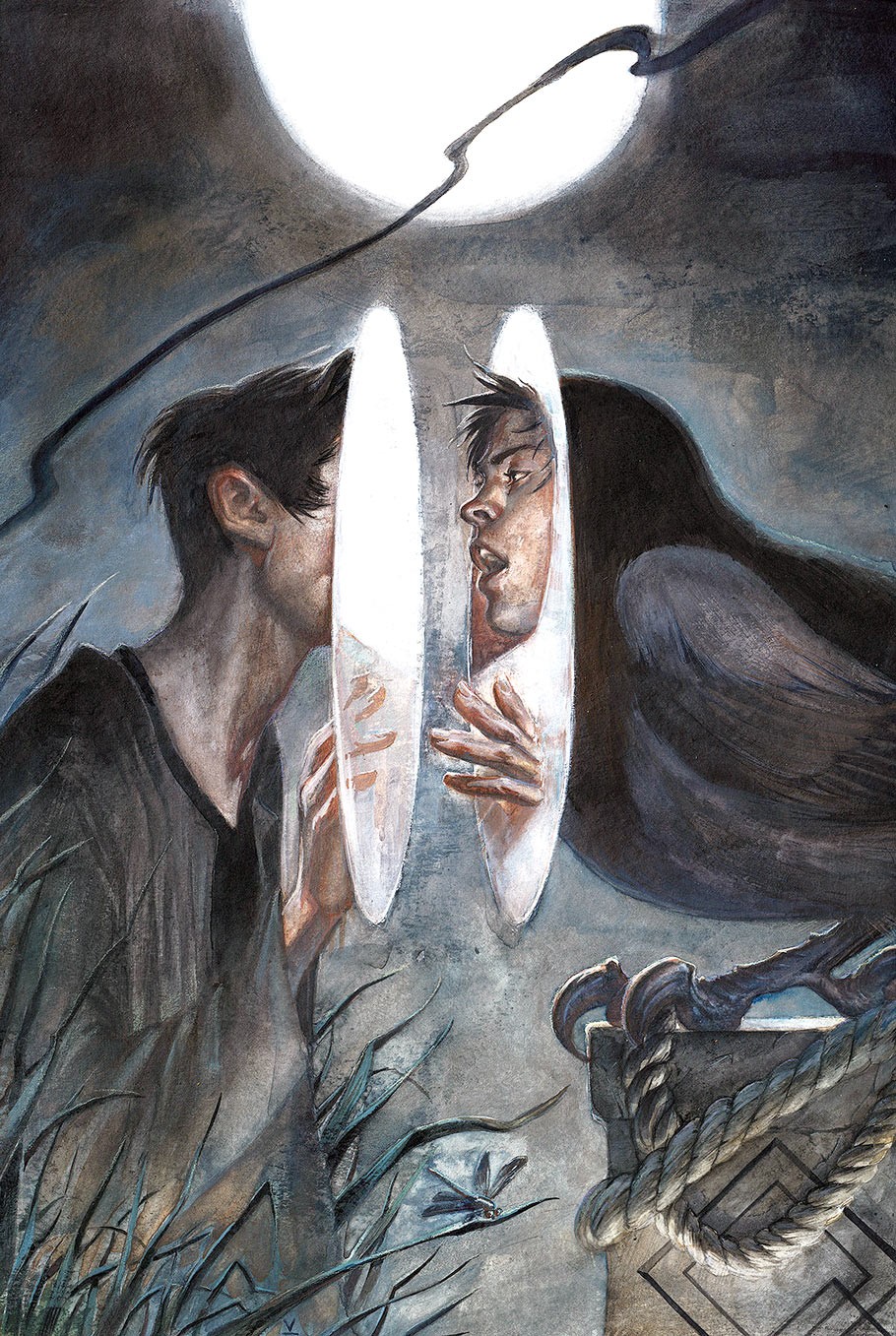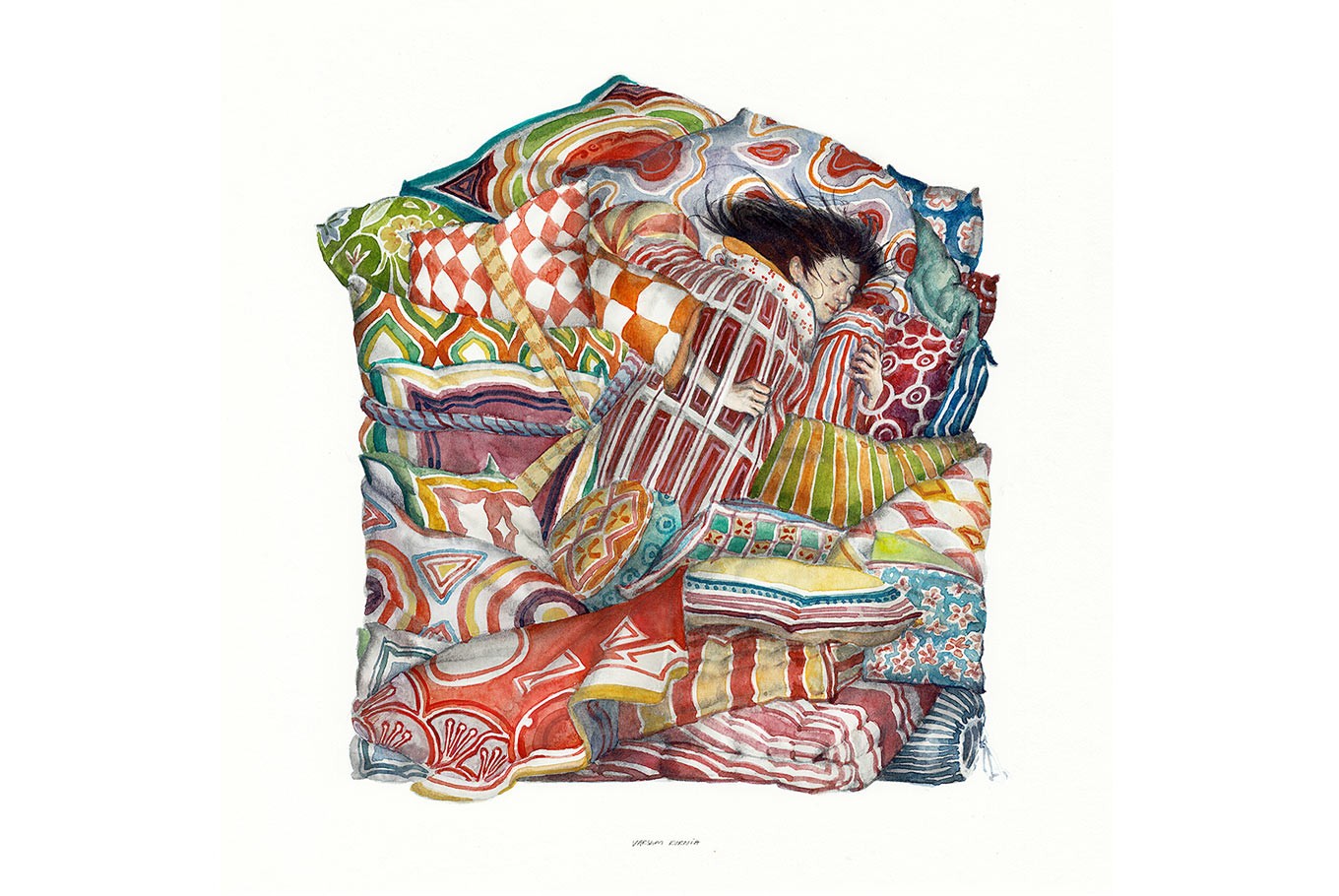Popular Reads
Top Results
Can't find what you're looking for?
View all search resultsPopular Reads
Top Results
Can't find what you're looking for?
View all search resultsArtist Varsam Kurnia illuminates the human condition
Known for utilizing water-based media to create his “surreal paintings,” painter and illustrator Varsam Kurnia’s pieces stand out for their stylistic moodiness and, in his own words, their exploration of the human condition.
Change text size
Gift Premium Articles
to Anyone
Jakarta-based artist Varsam Kurnia has made clear why he is one of the country’s rising artists.
He’s held a number of much-praised exhibitions, including his first solo one for his graphic novel Ceramic Sky, and was recently shortlisted for the Unknown Asia exhibition, which was held by dia.lo.gue and Unknown Asia Japan.
“I’m fascinated by our experience as human beings — so many things, ideas, experiences are encapsulated in this meat sack and more particularly in our brain,” the artist explains during his water coloring workshop. “There are endless ways to tell our story as human beings and I’m trying to find my voice to tell it.”
Having studied at the Illustration Academy in Kansas City, USA in 2011 — and later through an online art school called The Art Department (now called the Applied Art Academy) for three years, Varsam has developed significant skills for executing his often-complex pieces.
But his restless artistic spirit drives him to continue searching for ways to fully encapsulate the aforementioned human condition in the strongest of ways. The praise he’s received is appreciated but it doesn’t give him the artistic fulfillment he truly craves.
 Varsam Kurnia(Varsam Kurnia/File)
Varsam Kurnia(Varsam Kurnia/File)
“I find it hard to pat myself on the back since I always feel I could do so much more. That ‘proud’ moment is very short and dries up very quickly. If I still like what I’ve made in a week or so, then that’s an achievement in itself,” he says.
Though there are many names from the art world he admires, Varsam doesn’t yet feel like he’s found his “style” yet.
The process of searching is something he’s since abandoned, coming to an understanding with himself that sometimes letting things flow naturally is the best methodology. That philosophy seems to be reflected in the specificity he puts upon his influences: works instead of names.
“There are many artists I admire, but mostly it is a particular painting of theirs, not their entire oeuvre. I love Lautrec’s In Bed and Monet’s Creuse Valley [The evening effect] and also Gustav Klimt’s work. The feeling they evoke is really something else. I teared up when I saw them in person. [Their works are] very different to what I do personally.”
As for contemporary influences, Varsam has less trouble mentioning names — Benjamin Bjorklund, Jon Foster, Aron Wiesenfeld, Yoshitaka Amano, Magritte, Edward Kinsella, as well as Tim Walker, Florence Welch and Gerard DuBois because “they never stay the same.”
 Moonboy and His Star Guide by Varsam Kurnia(Varsam Kurnia/File)
Moonboy and His Star Guide by Varsam Kurnia(Varsam Kurnia/File)
“I do realize that there are [styles] that I tend to convey. I used to be frustrated about finding ‘my style’ and I tried to replicate or mimic other styles that I found cool and attractive but in the end, I stopped trying and I just paint what I feel is right for the moment,” Varsam says, adding that he even ran into a “prolonged artistic block.”
“I stopped painting for a while because whatever I sketched I found wasn’t good enough, not cool enough, and such. Which is the worst mistake any artist can make, to stop creating.”
He’s since gotten back into it, of course, utilizing his preferred media of watercolor, diluted acrylic and ink. All of which he loves due to their unpredictable nature, which often results in happy accidents (though, he adds, sometimes very “bad” ones as well).
“The ‘dialogue’ between the paper, the water and the pigment is really fun — you feel a mixture of blessing and luck when something so random can end up so perfect.”
The moody, sometimes-gloomy, quality of his paintings and illustrations do not come preconceived, Varsam says.
 The Wind-Up Bird Chronicle by Varsam Kurnia(Varsam Kurnia/File)
The Wind-Up Bird Chronicle by Varsam Kurnia(Varsam Kurnia/File)
It comes, he explains, from his admiration of pieces that contain enough depth to make someone stop in their tracks to observe and scrutinize.
“It’s not that I plan to make paintings that are dark and moody, they just emerge fully formed like that sometimes. I like colorful paintings too! But a lot of times, the inspiration comes from a book I was reading and I enjoy darker fiction so maybe they interconnect in one way or another,” Varsam suggests.
In order to keep doing what he’s doing, Varsam also works for commission, often drawing book covers. The different process of engaging with clients has given him new perspectives and even ideas that he’s brought into his personal pieces. He’s even managed to mix-and-match his commission pieces with his own work.
“Often they interchange with each other. I might find a doodle I did years ago to be a good fit for a job, or a job might inspire a personal painting that can in turn, evolve into a project.”











